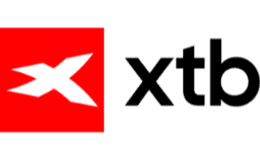All investing should be regarded as longer term. The value of your investments can go up and down, and you may get back less than you invest. Past performance is no guarantee of future results. If you’re not sure which investments are right for you, please seek out a financial adviser. Capital at risk.
The S&P 500 and FTSE 100 are major stock market indices. While the S&P 500 consists of 500 of the largest stocks from various US exchanges, the FTSE 100 includes the top 100 stocks from the London Stock Exchange. There are significant differences between them.
For a start, if you invest in the S&P 500, your money is invested in a dollar-denominated fund (unless you use a hedged version). In addition, the S&P 500’s juggernauts are overwhelmingly fast-growing tech stocks. Meanwhile, the FTSE 100 is weighted towards slow-and-steady companies in sectors like Energy, Industrials and Financials.
We look at more differences between the S&P 500 and FTSE 100 below.
What’s the difference between the S&P and the FTSE?
The S&P 500 and FTSE 100 are both stock market indices containing some of the biggest companies in the US and the UK. The FTSE 100 is simply the 100 biggest UK shares by market capitalisation. The S&P 500 is slightly different, market cap plays an important role but there’s other criteria a stock must meet to make it onto the index.
S&P 500
FTSE 100
As you can see, the top end of the S&P 500 leans towards Information Technology companies. Meanwhile, the top of the FTSE 100 leans more towards Healthcare, Energy and Finance. Keep in mind the largest constiuents of each index can shift regularly.
S&P and FTSE index funds
Here are some of the most popular S&P 500 and FTSE 100 funds along with their recent performance, according to JustETF:
ETF |
Icon |
1-year performance (to May. '25) |
5-year performance (to May. '25) |
Link |
|---|---|---|---|---|
| Invesco S&P 500 ETF (SPXP) |  |
2.98% | 92.93% | Invest Capital at risk |
| Xtrackers S&P 500 Swap ETF 1C (XSPX) | 2.96% | 92.44% | Invest Capital at risk | |
| HSBC S&P 500 ETF (HSPX) |  |
1.71% | 79.99% | Invest Capital at risk |
| iShares Core S&P 500 ETF USD (Acc) (CSP1) |  |
2.95% | 91.07% | Invest Capital at risk |
| SPDR® S&P 500 ETF (SPX5) |  |
1.80% | 79.38% | Invest Capital at risk |
| Vanguard S&P 500 ETF (VUSA) |  |
1.86% | 79.38% | Invest Capital at risk |
ETF |
Icon |
1-year performance (to May. '25) |
5-year performance (to May. '25) |
Link |
|---|---|---|---|---|
| Xtrackers FTSE 100 ETF 1C (XDUK) | 7.30% | 72.76% | Invest Capital at risk | |
| iShares FTSE 100 ETF GBP Acc (CUKX) |  |
7.07% | 72.45% | Invest Capital at risk |
| Invesco FTSE 100 ETF (S100) |  |
7.00% | 71.54% | Invest Capital at risk |
| HSBC FTSE 100 ETF (HUKX) |  |
3.61% | 44.45% | Invest Capital at risk |
| Multi-units Luxembourg - Lyxor FTSE 100 ETF - (100D) |  |
2.90% | 43.01% | Invest Capital at risk |
| iShares Core FTSE 100 ETF GBP (Dist) (ISF) |  |
3.70% | 44.44% | Invest Capital at risk |
| Vanguard FTSE 100 ETF (VUKE) |  |
3.09% | 43.23% | Invest Capital at risk |
What to consider when comparing the FTSE 100 and the S&P 500
When looking at the S&P 500 and FTSE 100, it’s important to consider various factors. Currency fluctuations play a role, as a stronger US dollar can benefit investments in the S&P 500 when converted to pounds, while a stronger pound can have the opposite effect. Investors can mitigate this risk by using currency hedging strategies.
Another aspect to consider is income. Holding an index fund covering either of these indices will lead to dividend payments, but the FTSE 100 has a current yield of 3.9% whereas the S&P 500 pays a lower yield of 1.1%.
Additionally, the price-to-earnings (P/E) ratios differ, with the FTSE 100 usually having a much lower average P/E ratio (around 10), while the S&P 500 tends to trade at higher multiples (around 20).
How do currency fluctuations impact investments in the S&P 500 and the FTSE 100?
If the US dollar gets stronger compared to the pound, it means that investments in the S&P 500 may be worth more when converted to pounds. On the other hand, if the pound gets stronger, it can make investments in the S&P 500 less valuable for British investors.
It’s important to realise that when investing in companies abroad, you’re exposing yourself to currency risks as well as equity risks.
However, there are ways to isolate yourself from these risks while still getting exposure to the S&P 500. For example, iShares S&P 500 GBP Hedged UCITS ETF uses currency hedging strategies to cancel out the effect of currency movements on your returns.
FTSE 100 vs S&P 500: Which is bigger?
The S&P 500 contains 500 stocks, while the FTSE 100 is made up of just 100.
The FTSE 100 is also a lot smaller than the S&P 500 in terms of market capitalisation – (as of July 2024) the FTSE 100 has a market cap of just over £2 trillion, while the S&P’s market cap is around $45 trillion (about £35 trillion). That makes the S&P 500 about 17 times the size of the FTSE 100 in terms of market cap.
FTSE 100 vs S&P 500: Concentration
There are 503 stocks in the S&P 500 and 102 stocks in the FTSE 100 — this is because of the different classes of shares that some companies have. When it comes to concentration, even though the S&P 500 is very top-heavy due to the mega-cap stocks weighted at the top, you might be suprised about the results.
The top 10 stocks in the S&P 500 make up just over 30% of the total index. Whereas for the FTSE 100, the top 10 shares make up around 47% of the total index. There, the FTSE 100 could be viewed as a more concentrated index.
The top 10 stocks in the S&P 500 (also listed below) make up just short of 30% of it.
FTSE 100 vs S&P 500: Stock quality
Judging stocks on quality is quite a subjective form of analysis. The top stocks in the FTSE 100 are vastly different from the top ones in the S&P 500, and the rest of each index also largely differs. The S&P 500 is made up of a lot of technology stocks, whereas the FTSE 100 contains only a handul.
The FTSE 100 has more stocks that could be considered “defensive”, meaning they may perform well during a recession or a downturn. Because, setors like Consumer Staples, Energy and Utilities can have pricing power or involve essential spending. However, the S&P 500 also now has its own fair share of blue-chip stocks. When it comes to stock quality, it depends what you’re looking for as an investor.
FTSE 100 vs S&P 500: Which is more diversified?
It depends on what sort of diversity you want. Obviously, the S&P 500 contains more stocks than the FTSE 100, but this doesn’t neccessarily make it more diverse.
A number of US companies in the S&P 500 have international operations, but so too do business in the FTSE 100. Both indices contain stocks across a wide range of sectors. The S&P 500 is quite concentrated with around 30% in Information Technology stocks, but the FTSE 100 is thinly spread at the bottom with only around 1% in Technology and 1% in Telecommuncations.
Platforms where you can invest in the FTSE 100 and the S&P 500
These trading apps allow you to invest in companies within each index directly or to invest in funds/ETFs (exchange-traded funds).

Fractional shares
Get dividend payments

Commission-free investing
Advanced trading tools

Fractional shares
5,400+ stocks/ETFs
A green metals boom could make the FTSE 100 shine
![]()
The FTSE 100 is home to 6 world-class mining companies, meaning it could strike it big in a green metals bull market.
According to metals expert Guillaume Pitron, “Over the next generation, we will consume more minerals than in the last 70,000 years.” That is due to the world’s increasing adoption of resource-hungry “green” technologies. The battery in an electric car, for example, needs lithium, manganese, cobalt, graphite, steel and nickel to run.
In previous commodities bull markets, the FTSE 100 has tended to outperform other indices. In 2022, its focus on commodities paid off as Russia’s invasion of Ukraine caused price shocks in oil, gas, nickel and other raw materials.
By owning FTSE 100 miners like Anglo American, Antofagasta, BHP Group, Fresnillo, Glencore and Rio Tinto, investors can get exposure to a wide range of critical metals. However, commodities markets are viciously cyclical. If global economic growth slows, that could be a major downer for mining companies.
How to invest in the S&P 500 and FTSE 100
- Find an S&P 500 or FTSE 100 index fund. Ideally, look for a fund with low fees, because if each fund is tracking the same index, you should try and minimise your costs where possible.
- Open a share-trading account. To invest in the funds, you’ll need to open a trading account with a broker or platform. Keep in mind that some index funds may only be available on certain brokerages or platforms. We’ve included some index funds below that are listed on the London Stock Exchange (LSE).
- Deposit funds. You’ll need to deposit funds into your account to begin trading.
- Buy the index fund. Once your money has been deposited, you can then buy the index fund. You’ll generally pay a small ongoing fee to invest in an ETF or index fund.
Which index has better stock diversification?
This can be down to interpretation, but here are some of the head to head stats and insights as a broad overview.
| S&P 500 | FTSE 100 | |
|---|---|---|
| Type of stocks | Large cap US equities | Large cap UK equities |
| Number of holdings | 503 | 102 |
| Top sectors | Information Technology 29.5%, Healthcare 12.8%, Consumer discretionary 10.3%, Financials 13.1%, Communication Services 8.9% | Financials 18.9%, Consumer Staples 16.5%, Healthcare 13.3%, Energy 12.5%, Consumer Discretionary 12.4% |
| Exposure to global economy | High | High |
| Past performance | Stronger | Weaker |
| Availability of ETF | Wide | Wide |
Bottom line
Both the S&P 500 and the FTSE 100 allow you to invest in some of the biggest stocks and shares in the US and UK respectively. Each index has its benefits and drawbacks, you might find that investments copying both could find a place in your portfolio.
Each index contains some excellent businesses across a variety of sectors and generating profits around the world (not just in the US and the UK). Ultimately, investors seeking growth may lean towards the S&P 500, while those looking for stability and higher income payments from dividends may prefer the FTSE 100.
Frequently asked questions
All investing should be regarded as longer term. The value of your investments can go up and down, and you may get back less than you invest. Past performance is no guarantee of future results. If you’re not sure which investments are right for you, please seek out a financial adviser. Capital at risk.
More guides on Finder
-
S&P 500 Vs. Nasdaq Vs. Dow Jones
The three best-known US indices go head to head. Search by company, review performance over time and understand key differences.
-
How to invest in the EURO STOXX 50
Learn how to invest in the Euro Stoxx 50 from the UK and discover some of the best Euro Stoxx 50 index funds and where you can invest in them.
-
Nasdaq vs S&P 500
Find out the key differences between the Nasdaq stock exchange and the S&P 500 index, along with their similarities and overlaps.
-
Invest in the Nikkei 225
Find out more about the Nikkei 225, some companies that make it up and how you can invest in the Nikkei 225.
-
Invest in the Hang Seng
Find out what makes up the Hang Seng index. We’ve compiled the different ways that you can invest in Hang Seng, such as through ETFs.
-
Invest in the DAX
Find out how to invest in DAX, the 40 largest companies on the Frankfurt Stock Exchange. We’ve compiled some ETFs and other ways you can invest.
-
How to invest in FTSE 250
Find out how you can invest in the FTSE 250 with exchange traded funds (ETFs). See which 250 companies on the London Stock Exchange are in the FTSE 250.
-
How to invest in index funds
In a nutshell, an index fund is a low-cost portfolio of shares and other assets that tracks a financial or stock market index. They’re a popular investment choice in the UK and worldwide.
-
How to invest in the S&P 500 in the UK
Learn how to invest in the S&P 500 from the UK and discover some of the best S&P 500 index funds and where you can invest in them.
-
How to invest in the Dow Jones
Find out how you can invest in the second-oldest stock market index, the Dow Jones.

